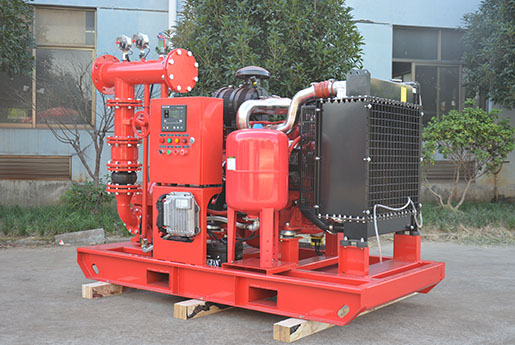Cause Analysis of Fire Pump Vibration
Vibration in a fire pump can be a cause for concern as it may indicate mechanical issues or problems with the pump system. Identifying the root causes of fire pump vibration is essential to prevent further damage, ensure reliable operation, and maintain system safety. Here are some common causes of fire pump vibration:
-
Misalignment: Misalignment of the pump and motor or improper coupling alignment can result in excessive vibration. This misalignment can cause uneven wear on bearings and other components.
-
Imbalanced Impeller: An imbalanced or damaged impeller can cause the pump to vibrate. This imbalance can occur due to manufacturing defects, erosion, or damage over time.
-
Loose Bolts and Fasteners: Loose bolts, nuts, or other fasteners in the pump and motor assembly can lead to vibration. Regular inspections and maintenance are crucial to ensuring that all components are properly secured.
-
Cavitation: As mentioned earlier, cavitation can cause vibration as vapor bubbles collapse within the pump. The violent bubble collapse generates shockwaves that can lead to vibration and damage.
-
Foundation Issues: The foundation on which the fire pump is mounted plays a critical role. If the foundation is not properly constructed or if it settles unevenly, it can lead to vibration problems.
-
Worn or Damaged Bearings: Bearings that are worn, damaged, or improperly lubricated can lead to vibration. Regular lubrication and maintenance of bearings are essential to prevent these issues.
-
Resonance: Fire pump systems can experience resonance if the natural frequency of the system matches the frequency of the vibrations generated during operation. This can amplify vibration levels and should be avoided through proper design and dampening measures.
-
Pump Cavities and Air Pockets: The presence of cavities or air pockets in the pump casing can disrupt the flow of water, causing uneven pressure and vibration.
-
Pipe and Piping System Issues: Vibration can also be transmitted through the piping system. Improperly supported or secured pipes can lead to vibration issues.
-
Motor and Pump Misalignment: The alignment between the motor and pump shafts should be precise. Any misalignment can result in vibration.
-
Electrical Imbalance: Electrical issues in the motor, such as an imbalance in voltage or current, can lead to uneven motor operation and vibration.
-
Mechanical Wear and Tear: Over time, components of the fire pump system can wear out, leading to increased vibration. This includes wear on seals, couplings, and other moving parts.
To diagnose the specific cause of vibration in a fire pump, it's important to conduct a thorough inspection and assessment of the system. This may involve visual inspections, measurements with vibration monitoring equipment, and sometimes disassembly for closer examination of components. Once the root cause is identified, appropriate corrective actions can be taken, which may include repairs, replacements, realignment, or maintenance procedures. Regular preventive maintenance and adherence to manufacturer's guidelines are key to preventing and addressing vibration issues in fire pump systems.


.png)
.png)

.png)


